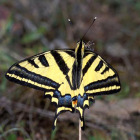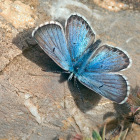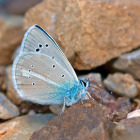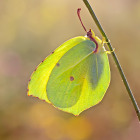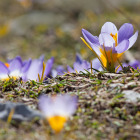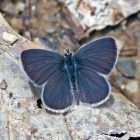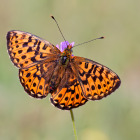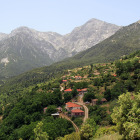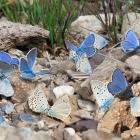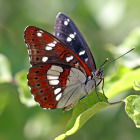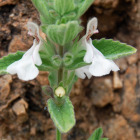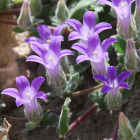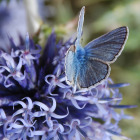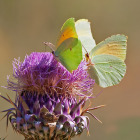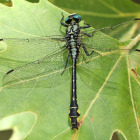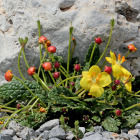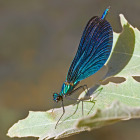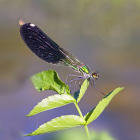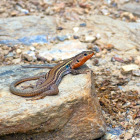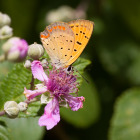Dates & Prices |
BOOK NOW |
Dates: 16th – 23rd June 2024 Confirmed departure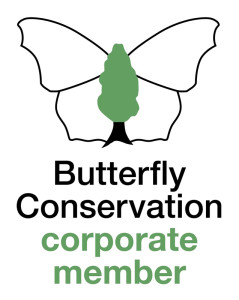
Price: £1,395 Almost full
Single Room Supplement: £150
Deposit: £150 per person
Price Includes: All meals, accommodation with private facilities, ground transport, services of guides, holiday report, donation to Butterfly Conservation
Not Included: Flights, travel insurance, drinks & any other personal items
Conservation Donation: Butterfly Conservation
Leader: Terry Goble + Alice Hunter
Group Size: Minimum of 4 and a maximum of 12 guests plus 1-2 leaders.
Grade: Gentle pace in a variety of terrains. Ideally suited to photography
Holiday Highlights
- 80-100+ butterfly species in a week are possible
- Visit two famous butterfly & flower rich mountains in southern Greece – Mt. Chelmos & Mt. Parnassos
- Special target species include – Chelmos Blue, Zephyr Blue, Odd-spot Blue, Greek Clouded Yellow, Two-tailed Pasha, Grass Jewel, Clouded Apollo, Blue Argus & many more!
- Explore the centre of the classical Greek world at Delphi and visit the Temple of Apollo
- Optional cog Railway through Vouraikos Canyon – most beautiful train trip in the Balkans
- Contribute to Butterfly Conservation
Explore the ancient world and wander upon some of the most celebrated butterfly mountains in southern Greece!
We will delight in showing you the best the region has to offer for summer flora and fauna, focusing largely on butterflies and flowers but also observing birds, reptiles, other invertebrates and any other wildlife of interest that may be discovered. Over fifty species of butterfly can be seen on a good a day on either mountain and we expect to enjoy a nice range of species with a total of somewhere between 80 – 100, depending on the season. The habitats we’ll encounter during the week are wide ranging; meadow, alpine pasture & meadow, pine forest, Mediterranean scrub, mountain streams & rivers, deep gorges, archaeological sites and even spots in the town and surrounding villages, as numerous butterfly species can also be found there. As mentioned, our wildlife spotting won’t be restricted to butterflies, although that is our main focus. We’ll also be on the lookout for flowers of which there are some lovely endemic species; birds such as Alpine Chough, Crag Martin & Rock Nuthatch among others; dragonflies including Beautiful Demoiselle, Small Pincertail & Greek Goldenring and reptiles such as the endemic Peloponnese Wall Lizard or Marginated Tortoise. Upon arrival in Athens we’ll head north of the Gulf of Corinth to Delphi village, nestled in the foothills of Mount Parnassos, a place legendary amongst lepidopterists for its treasure trove of butterflies. Delphi, at approx. 600m above sea level makes a convenient base from which to explore the mountain for the first two days of our holiday. We’ll venture out at various altitudes of Mount Parnassos (which at its highest peak is approx. 2,250m) looking for both butterflies and numerous and interesting flower species. Some of the butterflies we will be looking out for include Southern Comma, Large Tortoiseshell, Grecian Copper, Blue Argus, Chapman’s Blue, Osiris Blue, Balkan Marbled White, Zephyr Blue and the Parnassos subspecies of Mazarine Blue. In alpine meadows of higher altitudes, we may find Greek Clouded Yellow, Clouded Apollo and Purple-shot Copper, amongst others. In accompaniment may be some interesting birds such as Red-backed Shrike and Blue Rock Thrush. With the historic Delphi so close we’ll make a morning visit to wander amongst this magnificent archaeological site of international importance. Butterflies will still be on the menu and we may also enjoy some other interesting wildlife, such as reptiles amongst the ruins and birds such as Rock Nuthatch and Crag Martins. Later we’ll descend from the slopes and go on a quest to find Europe’s smallest butterfly – the Grass Jewel. We’ll need to fine tune our butterfly senses to find this tiny gem! But with our expert botanist on hand we should be at an advantage, by first seeking out Heliotrope, its local larval food plant. For the second part of the week we will cross the Gulf of Corinth via the spectacular Rio Antirrio bridge and on into the Peloponnese region. We will stay at a comfortable and charming hotel in Kalavryta, on the north-west slopes of Mount Chelmos (pronounced Helmos), which is the Aroanian mountain range in the Peloponnese region of Greece. We’ll be spending several days exploring the mountain and some other interesting sites nearby. During our stay we can expect to see a whole host of butterfly species on Chelmos; it is possible to see as many species in one day as there are in the whole of the UK! But that doesn’t mean rushing around or ticking a list. We want to give you every opportunity to indulge your passion for wildlife, by observing, photographing or sketching, and simply by being there to just take in the wonders before your eyes and ears! Not only is there a great diversity of species of butterfly to encounter, at times we will be able to watch large numbers of individual species. Who wouldn’t want to pause and take in a show of dozens of Balkan Marbled White, Clouded Yellow or Black-veined White!? Whilst we’re on Chelmos we will of course be keen to seek out the famous Chelmos Blue. There are many other delights though; Southern White Admiral, Two-tailed Pasha, Clouded Apollo, Cleopatra, Lattice Brown, Large Wall Brown, Camberwell Beauty, Powdered Brimstone, Southern Swallowtail, Scarce Swallowtail, Queen of Spain Fritillary, Spotted Fritillary, Cardinal, Great Banded Grayling, Mountain Small White, Escher’s Blue, Anomalous Blue, Amanda’s Blue, Ilex Hairstreak, Greek Clouded Yellow, Olive Skipper, Oriental Marbled Skipper, Blue Argus, Osiris Blue, Odd-spot Blue, Pontic Blue, Greek Mazarine Blue, Adonis Blue, Ripart’s Anomalous Blue (pelopi, often considered a distinct species), Meleager’s Blue, Great Sooty Satyr and many more! Along the way we’ll be able to sample other local treasures too, like freshly picked cherries from local orchards, wild strawberries from hidden forest glades and the delicious honey that the many local beekeepers produce; a taste of mountain flowers and the Mediterranean sun in a jar! The warm Greek climate and hospitality, a wealth of wildlife, breathtaking natural scenery, a hint of history and a bonanza of butterflies make for a truly memorable wildlife holiday!
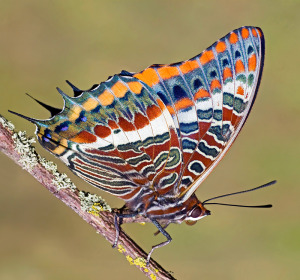
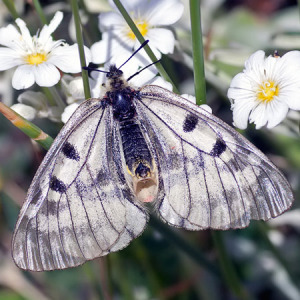

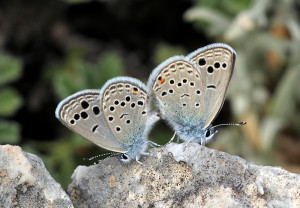
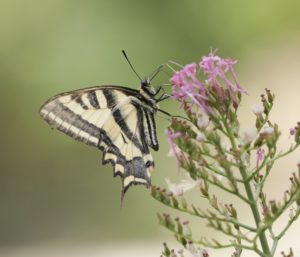
Day 1: Arrival in Athens and transfer to Delphi on the foothills of Mount Parnassos
Note: If you are interested in travelling to Athens from the UK over land by train please see this helpful guide.
Arrival times rather dictate the order of the day on this first transfer day but we will make at least one stop to stretch our legs and get refreshments on our way to Delphi as the journey is several hours driving. We begin on the motorway network which skirts the city and take progressively smaller roads as we head into the mountains. We may well be able to spot some species from the vehicle, not only birds such as Short-Toed Eagle and Crag Martin but also some of the more characteristic butterflies such as Cleopatra can be identified at a reasonable speed! Having settled into our hotel there may be time for a walk nearby before dinner in a local restaurant.
Day 2: Explore Mount Parnassos and surrounding areas
We make the most of our first day on the mountain with a journey that takes us to progressively higher altitudes with a variety of stops to take in flowery meadows, damp flushes, scrubby patches and forest glades on our way up to the alpine pasture at our highest point. We can expect to find some nice endemic plants and see a mixture of familiar species such as Common Blue, Silver-studded Blue, Small Copper, Meadow Brown as well as some less so including Idas and Escher’s Blues, Ilex and Sloe Hairstreaks, Grecian Copper and Grecian Clouded Yellow. We should see and hear some interesting birds too possibly including Red-backed Shrike, Corn Bunting, Wood Lark and Alpine Chough as we climb higher.
Day 3: A morning visit to Delphi, followed by further exploration of Mount Parnassos
With the stunning archaeological site of Delphi on our doorsteps we can’t pass up the opportunity to explore this extraordinary place. We will take our own pace through the ruins and keep our eyes out for the wildlife that share the space such as Marginated Tortoise among the stones, Kotschy’s Gecko on the ancient walls and the noisy Rock Nuthatches that nest in the reconstructed Treasury building. There are also likely to be Blue Rock Thrush here, Hoopoe calling and Crag Martins overhead. Meanwhile, depending on the season there could be a good variety of butterfly species here too including Southern Small White, Scarce Swallowtail, Southern Comma, Lattice Brown, Freyer’s Grayling, Southern White Admiral and others. There are often some interesting other invertebrates among the ruins too so we will look at any that appear and admire some of the plants here too.
In the afternoon we will head back up the mountain to explore a particularly rich damp glade in the pine forest where we hope to see species like Clouded Apollo, Camberwell Beauty, Nettletree Butterfly, Greek Clouded Yellow and many more, with a good possibility of finding large aggregations of puddling butterflies. There are often wild Gladioli flowering here along with several species of Helleborine and lots of other flowers. If the weather is kind we will spend the whole afternoon exploring this glorious spot at leisure.
Day 4: Transfer to Kalavryta in the Peloponnese region
Our first stop of the day will be a spot where we will search for Europe’s smallest butterfly, the Grass Jewel. This is also a good spot for finding the endemic plant, Daphne jasminea, and seeing more Rock Nuthatches.
We then move on towards our second hotel with a stop in the coastal town of Galaxidi for a spot of lunch and a bit of a walk around the headland. There are often Freyer’s Graylings in good numbers here, Marbled Skipper, Geranium Bronze and various other butterflies to be seen. We have sometime stumbled on Tortoises (not literally) in the woods and had good views of Hoopoes here too. The harbour also boasts an extraordinary diversity of small fish that can be easily seen through the crystal clear waters.
Crossing the impressive Rio Antirrio bridge, we head inland near the town of Diakopto, heading uphill towards Kalavryta where we will settle for the second half of our trip. Time and weather permitting we may well make another stop on our way to take in some more butterflies. The spot we like to visit is particularly rich and often good for Lesser Fiery Copper, a variety of Skippers, Silver Washed Fritillaries, Ilex and Sloe Hairstreaks, Grecian Anomalous Blue and Holly Blue among many others.
Day 5 – 7: Explore Mount Chelmos and the surrounding area.
The following days are often subject to some change depending on the cloud cover at higher altitudes, but are generally spent exploring a variety of sites at varying altitudes on the slopes of Mount Chelmos. We will spend some time looking for Odd-Spot and Chelmos Blues, both of which are limited to this single mountain. We will visit some meadows where we are likely to find Meleager’s Blue, Chequered Blue, Ripart’s Anomalous Blue, Cardinal Fritillary and many more. We are likely to find a number of Burnet moth species here too and if we are lucky we may find some Balkan Lizard Orchids flowering among other flowers.
On another day we will visit a site at lower altitude nearer the coast to look for Two-tailed Pashas. There are often lots of Graylings here too and a good number of Dragonflies by the nearby river which we can enjoy.
Guests will have the option at this point to take the rack and pinion railway from Diakopto on the coast as their return journey to Kalavryta. The rest of the group may visit the grounds of Mega Spilaio monastery or the memorial garden above Kalavryta itself.
Day 8: Transfer to Athens
Our final day is once again dictated somewhat by our flight times but the permitting we will make one last stop on our return journey to the airport to take in the extraordinary feat of engineering that is the Corinth Canal. This offers us a last chance at some wildlife observation too with a few butterflies having been spotted in the carpark previously and Lesser Kestrels frequently seen over the canal itself.
- Odd-spot Blue
2023 “The guides were fantastic and the making of the trip. The season was very unusual, everything was late and therefore a big effort was made to enable us see things on the list and the itinerary flexed accordingly.” Dee C
2022 “For extremely knowledgeable guides and top locations you should look no further than Greenwings for your next wildlife viewing holiday. I can thoroughly recommend them.” Martin P
“Great at finding the butterflies – 5 lifers in 1 day!. Many thanks for a super looking trip report!” Ken B
“Great fun, very focused, intent on helping and pleasing clients. The holiday was very educational, helpful with photography and a good choice of interesting locations. Loved the holiday report!!” Tom & Chris
“Excellent leaders, knowledgable, friendly and helpful. The holiday was very well organised and visits were to a very nice range of good, interesting sites. It was a most enjoyable holiday with a very friendly group. We visited wonderful places and each day was very full but never too tiring. The visits were never rushed, with plenty of time to admire the scenery and take photos. We thought the trip report was absolutely excellent and a super reminder of a wonderful holiday!” Lynn & Tim
Butterflies of Greece Holiday Report 2023
Butterflies of Greece Holiday Report 2022
Butterflies of Greece Holiday Report 2019
Butterflies of Greece Holiday Report 2018
Butterflies of Greece Holiday Report 2017
Butterflies of Greece Holiday Report 2016
Balkan Butterflies Holiday Report 2014
Balkan Butterflies Holiday Report 2013



